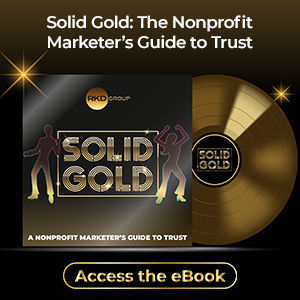When disaster hits—a wildfire, hurricane, earthquake or other tragedy—people rightly shift their attention. News feeds are flooded. Emotions run high. People instinctively look for ways to help, to heal, to make sense of it all.
Nonprofit organizations in the communities hit by a disaster often find themselves on the front line of response, helping people and pets recover and regroup. They also scramble to ask their donors for help addressing the bigger need.
We’ve got lots of great advice for how to fundraise effectively during a disaster. But what about organizations whose missions don't include disaster response?
If you’re a national or global nonprofit not directly tied to an emergency, you may feel stuck in that awkward tension. You may ask yourself questions like:
- Do we continue fundraising?
- Do we pause everything?
- What’s the right response when it’s not our cause—but it affects our donors?
We’ve helped many nonprofits navigate these moments. The key is to lead with empathy, not silence.
Here are three ways to show up well for your donors—especially when your organization isn’t the one providing emergency relief.
1. Dial back your asks—especially in impacted areas
Compassion starts with awareness.
When disaster strikes, suppress your fundraising emails and acquisition campaigns in affected ZIP codes. Smart nonprofits pull back on digital communication and pause direct mail where possible, understanding that now is not the time to make a financial ask.
Your donors are likely caring for neighbors, grieving losses or rebuilding their lives. The most thoughtful thing you can do is give them a little space.
2. Show up with care, not a campaign
Take the time to check on your donors in the affected region.
When wildfires recently devastated Los Angeles, one of our national nonprofit partners personally called donors in that area. No fundraising. No agenda. Just wellness checks and a genuine, “We’re thinking about you.”
The response? Overwhelming gratitude—and in some cases, re-engagement from donors who hadn’t given in a while.
When people are treated like humans first and donors second, something powerful happens: trust deepens.
3. Serve in the way only you can
You may not be handing out bottled water or blankets—but you still have something to offer.
For mission-driven organizations, that means reminding people: “We’re still here for you.”
Perhaps your donors in the affected area need help accessing treatment, or transportation, or simply need someone to talk to.
When possible, send a quick email or SMS that says, “If the disaster has impacted you, contact us. We’re here to help however we can.”
This is solidarity—not silence. It’s mission-led empathy that reminds your supporters they’re not alone.
Your integrity is your voice
In times of crisis, donors remember who showed up—and how. Being quiet may seem respectful, but thoughtful action goes further.
So if a disaster isn't your lane, don't switch lanes. Just show up with grace, compassion and purpose.
That’s the kind of fundraising that doesn't just raise money—it raises trust in what we can do together.






Leave a comment: